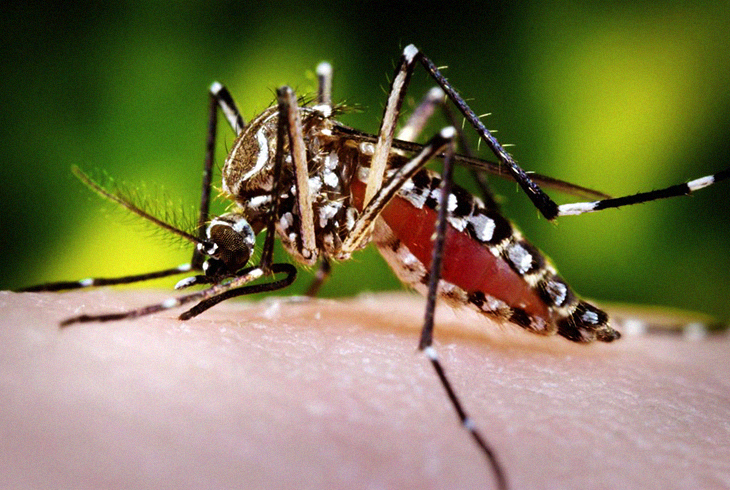
In a groundbreaking study from the Southern Hemisphere, a first for the research team there, they have found a bacteria that has the ability to sterilize and eradicate the intrusive and disease-ridden Aedes aegypti mosquito. This species is said to be responsible for infecting and spreading the life-threatening viruses yellow fever, Zika, and dengue.
If proven completely successful, this landmark study could manage to suppress and possibly eradicate the Aedes aegypti mosquito all over the globe.
The revolutionary trial involved at least three million male Aedes aegypti mosquitos that were released after being sterilized with the Wolbachia bacteria into three trial sites in Northern Queensland over a span of 20-weeks during the summer of 2018.
These sterile male mosquitoes then went in search of wild females with whom they mated, which then prevented these females from having the ability of producing any offspring. When the scientists came back to the trial site area one year later, the Mourilyan in Queensland to be precise, they found that it was almost completely free from mosquitoes.
The trial was also explained to be an international collaboration with the University of Queensland (UQ), Australia’s national science agency CSIRO, QIMR Berghofer Medical Research Institute, Verily Life Sciences, and James Cook University (JCU).
Chief Executive of CSIRO, Dr. Larry Marshall, explained that the organization was very proud to have furthered a 100-year legacy of helping protect Australia and all of its human inhabitants.
He shared, “The creation of our Health and Biosecurity team back in 2016 meant we were prepared for COVID-19, and that preparation is paying off across other biosecurity threats like mosquitos which spread some of the world’s most serious diseases. Over 40 per cent of humans suffer from mosquito-spread diseases, so it’s an opportunity for Australia to develop environmentally-friendly mosquito control tools to tackle current and future mosquito incursions.”
“By working with Australian and international partners we can tackle two of Australia’s greatest challenges at once—health and security—with breakthrough research translated into effective global export solutions,” he added.
He went on to say, “CSIRO is leveraging great Australian science to create new technologies to make this approach more cost effective and suitable for the climates of less developed countries that suffer most from mosquito-borne viruses, strengthening and protecting our region.”
Meanwhile, JCU Adjunct Professor Scott Ritchie explained that the Wolbachia trials was such a successful international collaboration since it managed to observe contemporary science work side-by-side with cutting-edge technology, in order to eliminate the deadly virus-carrying Aedes aegypti mosquito.
Prof. Ritchie explained, “It was a hugely successful project. We reared the three million male Aedes aegypti mosquitoes needed for the trial in the insectary at James Cook University in Cairns.”
Nigel Snoad, Verily’s Product Manager, shared that it was the community engagement that was quite essential to the accomplishments of the entire project.
He explained, “It was a huge achievement by the joint team to setup and operate the mosquito rearing, sorting and release systems, and develop strong community engagement and support.”
He also shared, “We were proud of the work we were able to do in collaboration with the CSIRO, James Cook University and the local community. The ongoing suppression after releases stopped is an important result, indicating that sustained impact is feasible for this disease vector.”
Nigel Beebe, who’s CSIRO’s scientist and UQ Associate Professor said that the trial, which was published in PNAS, shows how this technique is both robust and capable of efficaciously restraining mosquito populations.
Associate Prof. Beebe said, “During the trial, we saw over 80 per cent of the mosquito population suppressed across our three trial sites.”
“When we surveyed the sites the following year, we were very encouraged to see the suppression still in effect, with one of our most productive towns for Aedes aegypti almost devoid of this mosquito with a 97 per cent reduction across the following season. One year on, the mosquito population at the second trial site remained substantially suppressed, while the population fully recovered at the third site,” he added.
He also said, “We are currently investigating the differences observed in the following mosquito season as they are incredibly informative in further developing this technology and in modelling how we could remove this exotic virus-transmitting pest in other locations worldwide.”
The researchers also claim that this technique can be used to suppress or remove the disease-transmitting Asian tiger mosquito, Aedes albopictus, which has taken roots in the Torres Strait Islands of Australia.
In the meantime, the trial techniques are also being used in other CSIRO-led mosquito suppression programs in other areas around the world like French Polynesia and the Hunter region located in New South Wales, Australia as well. Should they work, then this technique could also help eradicate these issues that many third world countries suffer from each and every year.



